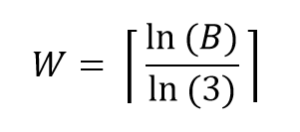
Lyrical Time Wastr – If I had $1000000 (Photo credit: jah~)
A look at the song If I Had a Million Dollars by the Barenaked Ladies, in terms of just what it would actually cost them for all of these things.
If I had a million dollars
If I had a million dollars
Well, I’d buy you a house
I would buy you a house
According to one article about a typical millionaire the average price of their home is about $320,000. By typical millionaire the article excludes celebrities, people that win the lottery, etc, and instead looks at self made millionaires. (http://www.cbn.com/finance/MMWmillionaire.aspx)
And if I had a million dollars
If I had a million dollars
I’d buy you furniture for your house
Maybe a nice chesterfield or an ottoman
Some resources say a good estimate of the cost to completely furnish a home is 25% of the home’s value. This would be $80,000. That’s definitely a high estimate, but with a million dollars you would spend extra to really make the place look nice. Also, this would obviously be included (http://www.grandinroad.com/chesterfield-tufted-ottoman/453033?redirect=y)
And if I had a million dollars
If I had a million dollars
Well, I’d buy you a K-Car
A nice reliant automobile
And if I had a million dollars,
I’d buy your love
Chrysler made a limousine style K-car, which is their most expensive model for $22,000.
If I had a million dollars
I’d build a tree-fort in our yard
If I had a million dollars you could help
It wouldn’t be that hard
$200
If I had a million dollars
Maybe we could put a little tiny fridge
In there somewhere
We could just go up there and hang out
$200
Like open the fridge and stuff
And there’d all be foods laid out for us
Like little pre-wrapped sausages and things
$10
They have pre-wrapped sausages
But they don’t have pre-wrapped bacon
Well, can you blame them?
Yeah
Pre Wrapped Bacon is $0, because it sadly does not exist.
If I had a million dollars
If I had a million dollars
Well, I’d buy you a fur a coat
But not a real fur coat, that’s cruel
$300
http://www.faux.uk.com/view/Faux-Fur-Coats/FF052/CAVALESE-LONG-HOODED-CHINCHILLA-COAT/
And if I had a million dollars
If I had a million dollars
Well, I’d buy you an exotic pet
Yep, like a llama or an emu
Llama: $55,000
This site lists out the breakdown of cost for the animal itself, food, shelter, and other purchases for startup. Their analysis is throwing down $40,000 just for two breeding llama. For a single llama and startup it would be more like $15,000, but we’ll use the $55,000 as our figure and consider the millionaire as having a serious interest in becoming a llama farmer. http://www.chesapeakealpacas.com/pages/alpaca_startup_costs.html
And if I had a million dollars
If I had a million dollars
Well, I’d buy you John Merrick’s remains
All them crazy elephant bones
And if I had a million dollars
I’d buy your love
We’re just going to skip this one. For reasons.
If I had a million dollars
We wouldn’t have to walk to the store
If I had a million dollars
We’d take a Limousine ’cause it costs more
We already purchased a limousine so this is taken care of.
If I had a million dollars
We wouldn’t have to eat Kraft dinner
But we would eat Kraft dinner
Of course we would, we’d just eat more
And buy really expensive ketchups with it
That’s right, all the fanciest Dijon ketchups
It’s $2.25 for one Kraft dinner. We’re going to go with three, because they would eat more.
$6.75
Fancy ketchup: $15
http://compare.ebay.com/like/271226097354?var=lv<yp=AllFixedPriceItemTypes&var=sbar
If I had a million dollars
If I had a million dollars
Well, I’d buy you a green dress
But not a real green dress, that’s cruel
$200
And if I had a million dollars If I had a million dollars
Well, I’d buy you some art
A Picasso or a Garfunkel
Art Garfunkel is not for sale. Picasso’s works sell anywhere between 150,000 for a drawing to 5 million euros for the most expensive painting. 150,000 euros is about $200,000 when converted.
If I had a million dollars
If I had a million dollars
Well, I’d buy you a monkey
Haven’t you always wanted a monkey?
If I had a million dollars I’d buy your love
A baby capuchin monkey would cost about $7,000. Adding in the expensives for food, medicine, and a habitat would be about $9,000. http://www.slate.com/articles/news_and_politics/recycled/2009/02/how_much_for_that_monkey.html
If I had a million dollars
If I had a million dollars
If I had a million dollars
If I had a million dollars
If I had a million dollars
I’d be rich
The grand total is…..$ 686,931.75. With this we have purchased a house, all of the furniture for it, a limo, a tree fort, a fridge, sausages, a fake fur coat, a llama, a fancy kraft dinner, a green dress, a Picasso, and a baby capuchin monkey. We have $313,068.25 left to spend (although, some of this would be needed to buy John Merrick’s remains, the one thing not taken into account).
Except we forgot love! How much does it cost to buy love? Some estimates run a yearly cost of about $2,000 for dating. The cost for the average wedding is $25,000.
Taking this last bit into account…
Total Expenses: $713,931.75
Money Left Over: $286,068.25
Ta Da.


